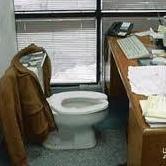Leaderboard
Popular Content
Showing content with the highest reputation on 01/10/2023 in all areas
-
This is a reminder that we do NOT host political discussions on this forum, and with new leadership in the U.S. House, I expect that some members will be tempted to post about proposed new legislation on here. Already this morning, I've deleted two posts and modified a third to eliminate a political reference in a very minor way that does not affect its content. I'm asking that each of you to please be cognizant of content before posting to keep this a politics-free site. This would be especially true of any legislation floated out that we all know has no chance of becoming law short of h*ll freezing over. Thank you.6 points
-
Yes, ATX has the place to indicate QCD and the amount of the distribution that was donated. As my church's treasurer we have received several checks from the fiduciary, some stating purpose but not that it was a QCD. The donor indicated via email. I have my church donation sent to me made payable to the church and I deliver it. I have had the others mailed directly to the charities. None of the checks indicated QCD. I have the acknowledgement letters and report the total of the distributions on the 1099R data entry screen. I ask those clients who may have given QCD amounts for copies of the acknowledgements 'to be sure I indicate the correct amount of the distribution that is not taxable.'5 points
-
1099s are for payments made regardless of accounting method of payer or recipient. Tom Longview, TX4 points
-
4 points
-
To condense what others have rightly noted, the deceased never owned the house, the trust did, so neither he nor his beneficiaries had any basis. The trust got step-up when it received the home. When it sold, it had a gain of the difference between the net sales price and its basis. The gain is what will be distributed to the beneficiaries.4 points
-
Most people who do it themselves never have Articles of Incorporation or a Buy Sell Agreement etc etc Then they don't treat their Corporation as a separate legal entity, which if they end up in a big lawsuit makes it much easier to pierce the Corporate Veil.3 points
-
3 points
-
I believe that IRA trustees have pushed back against any requirement that they determine whether the contribution is to a qualified charity - and they have no way of knowing if the beneficiary received anything of value in return for the donation.3 points
-
I don't think there's a box on the 1099R to indicate a qualified contribution. (Box 7 won't do it because there is no room for the dollar amount.) At any rate, typically the fiduciary sends the CLIENT the check, payable to the charity, and cannot know if the client ever turned it over to the charity. In UltraTax you enter the 1099R as usual and below there is a screen to enter the Qualified distribution and amount. It enters QCD to the left and subtracts the amount from taxable income. Does ATX have a code line for this?3 points
-
Good Question. I have a client donating in excess of $30,000 this year; his entire RMC. Strange that they wouldn't have a code as these seem to be becoming more popular. Document! Document! Document!3 points
-
Another tax professional provided the following information: being the house was in an irrevocable trust at death of grantor and the step-up happened at that time (many years ago), when the first beneficiary passed away without closing out trust, there is no secondary step-up for first beneficiary's children at date of first beneficiary's passing being the home was titled to trust and asset had not been disbursed to beneficiaries. Abby, did the lawyer confirm there was a secondary step-up at beneficiary's passing?3 points
-
I've never felt a need for any paperless software. I just scan and (hopefully) save the scan to the correct folder. I also print many things to PDF files in the client folder, like emails, text files, spreadsheets, photos of docs, etc.3 points
-
I've been using Fujitsu ScanSnap for several years. If it died today I would immediately order another one. It has been one tough scanner.3 points
-
I just read the instructions for form 8832. The rules for late relief are in the instructions. @michaelmars Thanks @mircpa for the info. I learned something new today. Tom Longview, TX2 points
-
Filing cabinets and first line enforcers... That is the "rub" of my part of this thread, many are doing things which put them, and the clients, at risk, via the e records rules. I have some awful first hand experience in this area, as I have shared before. Person had my software on their computer. (Convicted tax fraudster, preparing returns for others and taking fake refunds for them.) Feds searched/inspected the computers, found my software, and asked what part I had in the situation. The convicted party, while they could, made death threats against me and mine if I even spoke to the officials investigating. I think I already asked here, and most clients do not ask things about how secure their data is kept (IIRC, it was a topic which should now be for anyone not using at least Windows 10). I ask those questions (now).2 points
-
@michaelmars File 8832 to convert from disregarded entity to be elected as corporation & late election 2553. I believe late election relief is available for 8832 under Rev Proc 2009-41 & for 2553 Rev Proc 2013-30.2 points
-
The late relief is for if they meant to be taxed as a S but just forgot to submit the form. If they have already filed Sch C for the LLC in prior years, that argument doesn't hold much water, does it?2 points
-
Lion. Thank you for the above. It appears nothing has changed since I dug into it heavily a decade or two ago. If the references, like the one above, included all of the relevant information (I shared above), I doubt anyone would stop keeping paper. I did not (then) find any issues where something like a fire, theft, or accidental loss required anything of the keeper of paper records as far as proactive notification of loss. I say all of this as I am on the lookout for a good looking enough (SWMBO vetoed metal) tall 4 drawer file cabinet for my office/grandaughter room... 4 years is my data cycle. Current is in a drawer next to me, the 4 prior are in the dedicated cabinet. The drawers get labeled for shred date, then the empty one is used for the data no longer current.2 points
-
Was the LLC formed during 2022 or earlier? If earlier, it can not be backdated. If in 2022 were they acting as if they were a S all year, such as taking paychecks?2 points
-
One part is from '97. What gets me is how anyone would agree to this, because of the requirement to proactively notify if there is any chance data is not available (such as even a computer change, or upgrading software - and not taking the item to recreate every required item), and the essentially giving rights to a search at any time for ANY reason (what those on parole must give up!) . Imagine one of these (random, or not so random) searches during your busy time and your computer(s) are either occupied, or more likely, taken away for search. I know, they state is is not a "search", but items found during any allowed examination are not likely to be prohibited from being evidence. Imagine having to explain that to your clients, E&O provider, your BOP provider, and your debtors. Personally, I don't consider PDF's to be a specific issue, unless the PDF readers ever abandon an old format. But, I have multiple local backups and multiple secure online backups, so anything where I could not get to something would have far worse consequences than a data review. But, the eltter of the rulings, even PDF's are considered e records, so the onerous allowance of not keeping paper records still applies. Paper - while I have not ruin across it, if there is no corresponding rule for paper, then paper remains king. A file cabinet or drawer by year, labeled with the first allowable shred date remains a safe way to comply, and to not retain any data which (being not required) could be used against you/client). I guess for me, a "sum it up" for the original topic, I would not be comfortable using some sort of data retention service UNLESS they warranted they meet the IRS data retention rules.2 points
-
That's from 1998. I'd say it's long past time for an update. The procedure doesn't even mention PDF files, only 'machine sensible records.'2 points
-
Imagine if employers pushed to be allowed to give negative references to equal the playing field.2 points
-
2 points
-
We have an old ScanSnap (~8yrs) still going strong. Office bought a 2nd a couple years ago for throughput ease and it's also going strong. I have, at my home office, a truly ancient (12+ years?) Kodak i1120 ScanMate - still going strong - that has a nearly vertical paper path and the best duplex scanning ever. No longer available or supported but it's been so good I bought a 2nd off eBay a couple years ago.2 points
-
Ideally the fiduciary would report the total distribution in Box 1 and the taxable amount in Box 2a, net of the QCD. However there are so many potential variables which go into determining the taxable amount that fiduciaries leave Box 2a blank.2 points
-
It hasn't shown up on my own 1099 or on the 1099s of several clients who also make QCDs. I make copies of the fiduciary QCD Documents including the checks, plus the charities usually indicate on their acknowledgement letter that it's a distribution from an IRA.2 points
-
2 points
-
My 1099's from Fidelity do not indicate this and have not for the last few years.2 points
-
I had one like this, and I got the lawyer who placed the house into the trust to send me a letter stating that the house did get a step up in basis at date of death.2 points
-
That's all I buy. We have 3 generations of the top of the line scansnap and I can't recall any of them ever dying.2 points
-
Yes, I have a Fujitsu ScanSnap that is still going strong after many years. Excellent scanner!2 points
-
Because they are already a state entity, and LLC, they do NOT file Form 8832. They file Form 2553 to elect S-corporation taxation.1 point
-
From IRS Pub 1345: Record Keeping and Documentation Requirements EROs must retain the following material/documents listed below until the end of the calendar year at the business address from which it originated the return or at a location that allows the ERO to readily access the material as it must be available at the time of IRS request. An ERO may retain the required records at the business address of the Responsible Official or at a location that allows the Responsible Official to readily access the material during any period of time the office is closed, as it must be available at the time of IRS request through the end of the calendar year. A copy of Form 8453, U.S. Individual Income Tax Transmittal for an IRS e-file Return, and supporting documents that are not included in the electronic records submitted to the IRS; Copies of Forms W-2, W-2G and 1099-R; A copy of signed IRS e-file consent to disclosure forms; A complete copy of the electronic portion of the return that can be readily and accurately converted into an electronic transmission that the IRS can process; and The acknowledgement file for IRS accepted returns. Forms 8878 and 8879 must be available to the IRS in the same manner described above for three years from the due date of the return or the IRS received date, whichever is later. The Submission ID must be associated with Form 8878 and 8879: The Submission ID can be added to the Form 8878 and 8879 or the acknowledgment containing the Submission ID can be associated with Forms 8878 and 8879. Forms 8878 and 8879 must be available to the IRS for three years from the due date of the return or the IRS received date, whichever is later. If the acknowledgement is used to identify the Submission ID, the acknowledgement must be kept in accordance with published retention requirements for Forms 8878 and 8879. The acknowledgement is not required to be physically attached to Form 8878 and 8879; it can be electronically stored. EROs may electronically image and store all paper records they are required to retain for IRS e-file. This includes Forms 8453 and paper copies of Forms W-2, W-2G and 1099 R as well as any supporting documents not included in the electronic record and Forms 8878 and 8879. The storage system must satisfy the requirements of Revenue Procedure 97-22, 1997-1 C.C. 652, Retention of Books and Records. In brief, the electronic storage system must ensure an accurate and complete transfer of the hard copy to the electronic storage media. The ERO must be able to reproduce all records with a high degree of legibility and readability (including the taxpayers’ signatures) when displayed on a video terminal and when reproduced in hard copy.1 point
-
It doesn't matter whether it's one QCD Distribution or six QCD Distribution. My 1099 R from Charles Schwab doesn't give any indication of how many or how much.1 point
-
It will be interesting. What is the fiduciary? I split mine among 4 charities in the past. The 1099R from Fidelity just showed the full distributed amount with no tax withheld. I entered the QCD on the worksheet and QCD showed up in the right place. I do have a second amount from a 403(b) in TIAA-CREF so the total distributed was higher than the taxable amount.1 point
-
Box 7 could be used if the fiduciary issued two separate 1099Rs, just like they issued separate checks. And if the check is payable to the charity, and clears the bank, I would think that is pretty indicative that it reached the charity. Banks have gotten pretty cautious about cashing checks for people that are not made out to people. At least they have around here.1 point
-
Brownstein January 9, 2023 NEWS The Federal Trade Commission Proposes Ban on Employer-Worker Non-Compete Agreements On Jan. 5, 2023, the Federal Trade Commission (FTC) issued a Notice of Proposed Rulemaking (Proposed Rule) seeking to categorically ban nearly all employer non-competition agreements nationwide. If passed in its draft form, the Proposed Rule would: (1) prohibit employers from entering into virtually all non-compete agreements with all workers, (2) require employers to rescind existing non-compete agreements, and (3) require employers to notify past and current employees that their non-compete obligations are no longer in effect. The Proposed Rule would supersede all less-restrictive state non-compete laws, which in many jurisdictions are common and enforceable if the restriction reasonably protects the employer’s legitimate business interests. The Proposed Rule marks a major shift to the legality and enforceability of non-compete agreements. Employers who have historically included non-competition provisions in employee handbooks, employment agreements and equity grants will need to make significant changes before the Proposed Rule is implemented. The Proposed Rule is in response to July 2021 Executive Order 14036, which directed the FTC to issue rules to limit the use of non-compete clauses “that may unfairly limit worker mobility.” In response, the FTC took a sweeping approach to banning non-competes, deeming such clauses as categorically unfair. The Proposed Rule broadly defines a non-compete agreement to include any “contractual term between an employer and a worker that prevents the worker from seeking or accepting employment with a person, or operating a business, after the conclusion of the worker’s employment with the employer.” The Proposed Rule also forbids any contractual provision that achieves a similar effect, such as an overly broad nondisclosure or non-solicitation agreement that would effectively preclude a worker from working in the same field. The rule applies to all employers nationwide and all “workers,” including an employee, independent contractor, extern, intern, volunteer, apprentice or sole proprietor who provides a service to a client or customer. Further, the Proposed Rule would require employers to rescind existing non-compete clauses no later than the rule’s compliance date. The Proposed Rule places the onus on employers rescinding a non-compete clause to provide notice to current and former employees before the date the rule becomes effective. The Proposed Rule provides model language for such notice and would also establish a safe harbor provision whereby an employer would satisfy the rescission requirement when it provides satisfactory notice to the affected workers. Finally, the Proposed Rule would also prohibit an employer from representing to a worker that the worker is covered by a non-compete clause where the employer has no good faith basis to believe the worker is subject to an enforceable non-compete clause. Under this provision, employers are prohibited from threatening to enforce a non-compete clause against a worker, advising a worker against pursuing a particular job opportunity due to a non-compete clause, or representing to a worker that the worker is covered by a non-compete clause. AUTHORS Sarah Auchterlonie Kayla Dreyer Craig Finger Rosemary Becchi, Strategic Advisor and Counsel Annmarie Conboy-DePasquale, Policy Advisor bhfs.com © 2023 Brownstein Hyatt Farber Schreck, LLP This document is intended to provide you with general information regarding the FTC's non-compete ban. The contents of this document are not intended to provide specific legal advice. If you have any questions about the contents of this document or if you need legal advice as to an issue, please contact the attorneys listed or your regular Brownstein Hyatt Farber Schreck, LLP attorney. This communication may be considered advertising in some jurisdictions. The information in this article is accurate as of the publication date. Because the law in this area is changing rapidly, and insights are not automatically updated, continued accuracy cannot be guaranteed.1 point
-
The increased Child Care Credit and the over 65 EIC were two of the favorites that gave back a little bit to those who are working to make ends meet. I would have hoped they could have found something more beneficial to the wealthy to chip away at.1 point
-
Two tax breaks I wish had been extended are the charitable contribution deduction for nonitemizers and the increase in expenses eligible for the child care credit. I did not find abuse of the deduction for charities and was in fact surprised that so many clients said they gave zero. The maximum expenses allowed to calculate the child care credit started at $2k back in 1976 (and that didn't cover the cost of care back then) and increased to only $3k along the way.1 point
-
Almost all of my clients are Blue Collar Businesses. Every single one of them has a knee jerk response to avoid using Attorneys. When they do reluctantly use an Attorney, they won't ask the Attorney to explain all the stuff they don't understand. So in the end their expectations were fulfilled, it was waste of money.1 point
-
There are of things which will be reduced as the pandemic related expenditures expire, Medicaid, WIC, SNAP and the Child Tax Credit. In addition none of the usual year end extenders were passed.1 point
-
"A proposed class-action lawsuit filed this week alleges that Meta, Facebook’s parent company, violated users’ trust and expectations of privacy by collecting sensitive financial information from online tax-filing services. The lawsuit, filed on Dec. 1 in federal court, accuses Meta of breaking contractual promises to users and, in some cases, violating state and federal law. The action was brought on behalf of anonymous plaintiffs who filed their 2020 taxes online using H&R Block." "Meta is also facing at least five class-action lawsuits from patients alleging that its pixel’s collection of data on hospital websites violates various state and federal laws." So far the only known government action are inquiries from Sen Mark Warner and Sen Jon Ossoff.1 point
-
Disagree. If you make payments to a vendor via CC or Payment App, the CC company is supposed to send the 1099K and you do not send a 1099NEC or 1099MISC. That was made clear earlier this year. The IRS does not want double reporting of payments made by CC. If the church does not want to file 1099s, then pay everything to vendors eligible for 1099s via CC. Tom Longview, TX1 point
-
That's a real bargain considering the full retail is almost $200, and that price is why I stopped getting them.1 point
-
1 point
-
I wish I had the same faith in our government institutions that you do, but I just don't see the IRS taking on HRB and Meta. I guess I am just jaded at this point. However, I did contact both my Senators via their website and let them know about this. Tom Longview, TX1 point
-
Exactly. What Judy says. There is a confirmation hearing coming up for a new IRS Commissioner. Perhaps we should send an email to our Senators and ask them to ask the new commissioner designate about this situation and his plans about it moving forward. If IRS lets them get away with this, we will have no good reason to try to persuade our clients that their personal data included in their tax return is safe with the IRS. Tom Longview, TX1 point
-
If I, as a tax preparer, shared any of this personal data with anyone it would be considered an ethical violation under circ 230 and my professional standards. Why is the IRS not cracking down and fining these software companies when the agency has other ridiculous standards for us such as the size of micro-shredded chips and all the various other rules for safeguarding taxpayers' data and privacy? This is infuriating!1 point
-
Nothing is provided free. Free email? No, the provider is somehow making money from you and trying to limit their expenses such as over aggressive filtering to reduce bandwidth. (One example, and why free email is not wise for business use, or really not even for personal use, the lack of control over what you actually see and when.) “Gmail is a part of (but does not make up entirely) Google’s “Google Search & other” ad revenue segment on their annual report. Which, in 2021, generated $148.95 billion of Google’s total $257.63 billion in revenue.” It is safe to believe getting non generic info, such as via the tracker; is more valuable than just serving ads. On the other hand, many don’t bother with over worry about privacy, accepting the risks and enjoying the “free” services.1 point
-
Seems more a reason to never use Intuit, TaxAct, TaxSlayer, & Block since they're the ones illegally selling client data.1 point











